HP w2207 22in LCD Monitor Review
HP w2207 22in LCD Monitor
Can HP stake a claim for a slice of the 22in LCD pie? Andy finds out.
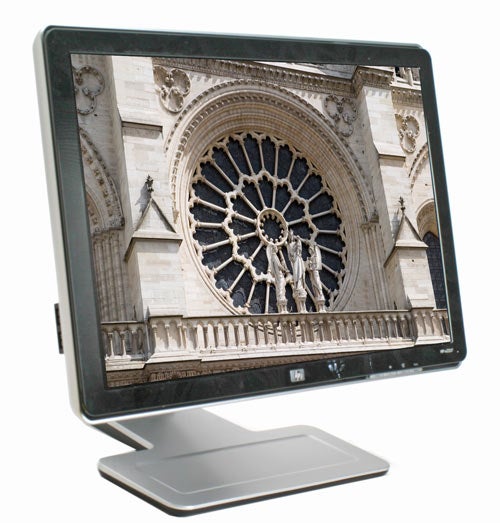
Verdict
Key Specifications
- Review Price: £239.00
As was noted in my review of the Viewsonic VX2255wmh, 22in monitors are quickly becoming a very popular form factor. In this respect 1,680 x 1,050 has become the 1,280 x 1,024 of the widescreen age and every manufacturer is eager to make a claim to dominate this space, more or less guaranteeing that no one will.
One such company is HP, whose credentials in this market were done no harm when Riyad looked at its 30in offering, the LP3065. However, the 22in w2207 I’m looking at today has an altogether different character to its larger cousin. Sporting a ‘BrightView’ glossy finish, and effortlessly stylish design, it’s aimed squarely at the mass market of entertainment and gaming enthusiasts who want to spend a little money on something to brighten up their computing.
So what about that design? Well, the minute the HP left the box it was clear that in design the w2207 was a class apart from other models we’ve seen. The slim bezel is finished in an attractive and high quality glossy black, while a sliver highlight that runs along the top and bottom is another nice touch. Indeed, everything about the design simply oozes refinement. Even the four OSD buttons, aligned to the right of the bottom edge, have an understated class to them and there’s a refreshing lack of superfluous adornments such as stickers, just an HP logo and a model number, while the power button is banished to the top edge of the display.
Overall there’s little not to like, and it even trumps the Samsung 226BW which itself is no ugly duckling – far from it in fact. This design sensibility means that the w2207 is perfectly suited to any environment, be it the bedroom or living room – perhaps matched with the equally impressive looking HP Pavilion S3040 that Ed looked at recently? I can smell the chemistry already.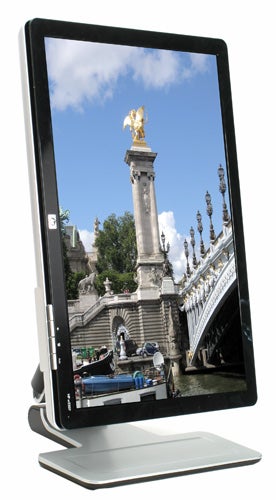
But let it not be said that the w2207 is all about appearance, because other elements of the design are just as impressive. Take the stand, which shares a similar design to that of Dell’s 2707WFP with a hinge mechanism providing the height adjustment. This is a very effective method, being flexible, secure and easy to operate. In addition to height adjustment of 11cm, there’s also tilt control from between -5 degrees (down) and 30 degrees. This combination means that the w2207 can be placed in the less orthodox upward pointing position, with the user looking down on the screen, favoured by the Eizo FlexScan HD2441W.
Thankfully the HP isn’t quite as expensive as the Eizo, just £239 compared to nigh on £1,000. That said this price does put the w2207 at the higher end of the market alongside the Viewsonic VX2255 and the Samsung 226BW, though in all honesty this isn’t a great deal to ask considering a good monitor will last you for many years to come.
Unlike other displays in this category the HP also features a pivot mode, allowing one to use the monitor in a portrait position when looking at long documents or web pages. This adds a great deal to the flexibility of the display, and to round things off there’s swivel control thanks to a small rotating disk hidden under the base of the stand.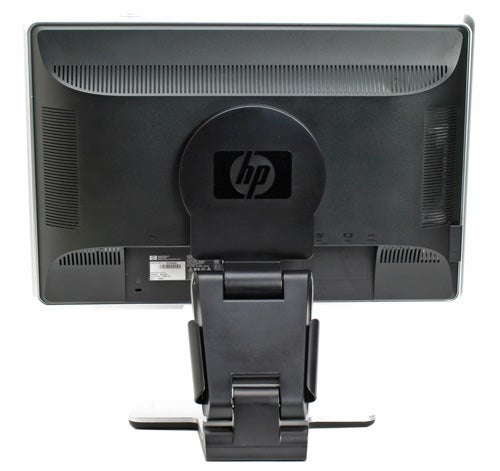
It’s pretty clear then that the w2207 lacks no adjustability, but what about performance? As with the majority of monitors in this market the HP utilises a 6-bit TN display panel with dithering, which artificially compensates for the lower bit rate and produces a 16.2million colour panel. Some manufacturers have got into the habit of listing this as 16.7million colours, which would indicate an 8-bit panel, but this certainly isn’t the case.
This isn’t ideal, but it isn’t the end of the world either and other parts of the specification are far more promising. A quoted contrast ratio of 1000:1 is excellent, as is the 300cd/m2 brightness and the 5ms (on-off-on) response time, though claimed response time is generally moot. Connectivity is fairly standard, with an HDCP enabled DVI port and VGA D-Sub, though HP has also made space for a two port USB hub. An audio input on the back indicates the presence of some in built speakers, albeit hidden ones, and as ever they are very poor – what else is new?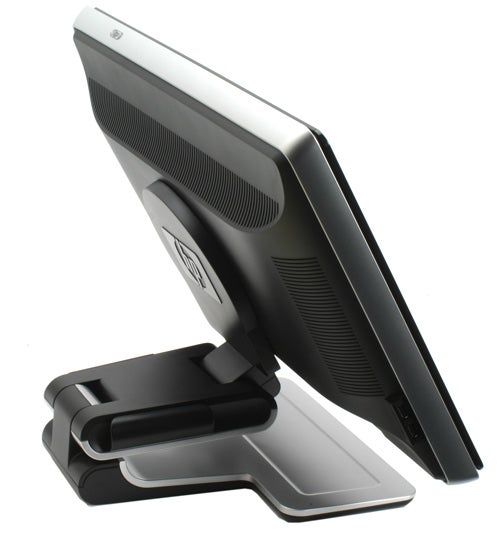
Setting up the monitor was a trifling affair as the w2207 comes in one piece, stand and all. In the box HP provides everything you’ll need, including a power, DVI and D-Sub cables as well as a USB cable and an audio cable. As is fairly typical all documentation is provided on CD.
Once in use the HP gave a good first impression. Before even tweaking the settings it is very pleasant to look at, producing excellent colours, deep blacks and a generally warm and nicely defined image. Entering the OSD reveals one of the better examples you’ll see. Naturally there are options to control brightness and contrast, while under the ‘Image Control’ menu you can select ‘Custom Scaling’, including an aspect mode to stop the display from scaling a lower resolution input.
Pre-defined colour modes include 9300k, 6500k and sRGB with manual controls available too. As has become common the w2207 also features a number of context based presets, in this case called ‘Quick View’. These include Movie, Photo, Gaming and Text modes, most of which have varying subtle differences that are barely worth mentioning. The exception is the Movie mode, which is only worth mentioning because it should be avoided. As you might expect it ‘boosts’ the black levels, but it goes too far and just destroys any sense of detail or depth. All is not lost though because, as out testing showed, even without this mode the black levels are more than good enough.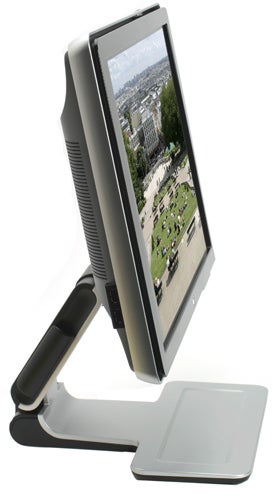
Testing began with the traditional set of DisplayMate screens, a program designed to push monitors to the limits of their abilities. Loading up the Dark-Grey Scale test, it’s immediately obvious that the HP is very adept at creating excellent blacks. The 1000:1 Contrast Ratio certainly helps, as does that high contrast glossy finish but it does mean that the display struggles to produce darker greys effectively.
With some tweaking of the brightness and contrast levels it is possible to improve things somewhat, but there’s still some noticeable compression. Much the same can be applied to the White-Level Saturation, though not to the same degree. In any case it ought to be noted that these elements don’t have too great an impact on general use, and for gaming and films erring on the side of blackness is probably beneficial.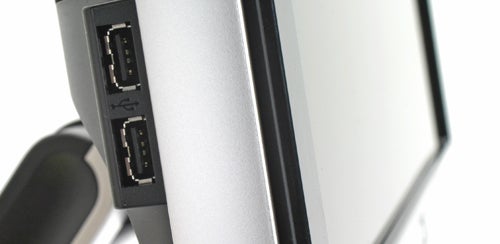
Other parts of the tests were well produced. The Colour Scales showed very nice gradual steps in colour all the way to the brightest end of the scale. Dark Screen and Uniformity tests did, however, demonstrate some very minor backlight bleeding from the bottom and top of the display which also resulted in some shading occurring around the extreme edges of the screen. However these problems were once again very minor, with the light bleed in particular being nothing compared to the more obvious problems of the Viewsonic VX2255wmh.
However these tests didn’t reveal one the main weaknesses of the w2207: motion. As previously noted, the claimed 5ms (off-on-off) response time seems a bit fanciful and testing confirmed that this is almost undoubtedly a grey-to-grey figure. Smearing and ghosting was noticeable during video playback, and though only very discerning eyes may spot it normally, during slow panning shots the weakness was quite evident.
This is a shame too because the style and glossy finish lend the HP to video playback and, with exception of some smearing, good quality video looked superb with excellent detail, deep colours and excellent black levels. These points were very well demonstrated by firing up Quake 4, where its palette of dimly lit corridors and colourful lighting was superbly produced.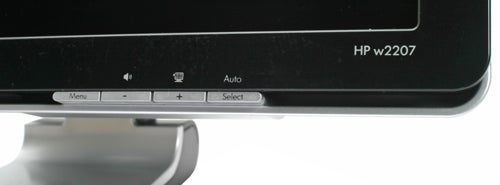
Ultimately it boils down to how fussy or sensitive you are to the kinds of motion problems experienced in the HP. These are the sort of problems you’ll get on pretty much any LCD, but compared to the likes of the Samsung 226BW the HP is slightly, but not overwhelmingly, worse. In almost every other respect, however, it either matches or betters the competition, particularly in design and stand adjustment, while viewing angles are surprisingly good considering this uses a TN panel which aren’t renowned for their viewing angles. Thus, if you can live with this blemish then you won’t be disappointed.
Finally, no review would be complete without mentioning the Samsung 215TW. It’s still our 1,680 x 1,050 monitor of choice, and more recently prices have been stumbling so fast as to suggest that it’ll soon to be out of supply. As such, if you’re thinking of getting a new monitor at this resolution then now might be a good time.
”’Verdict”’
There’s a great deal to like about the HP w2207. It offers market leading design, superb adjustability and has all the features a display should. Image quality is generally excellent, however it comes with the notable caveat that it sometimes struggles with motion smearing and ghosting. Even so this is a great monitor, and if you can excuse the motion problems it will serve you well.
Trusted Score
Score in detail
-
Image Quality 8
-
Value 8

